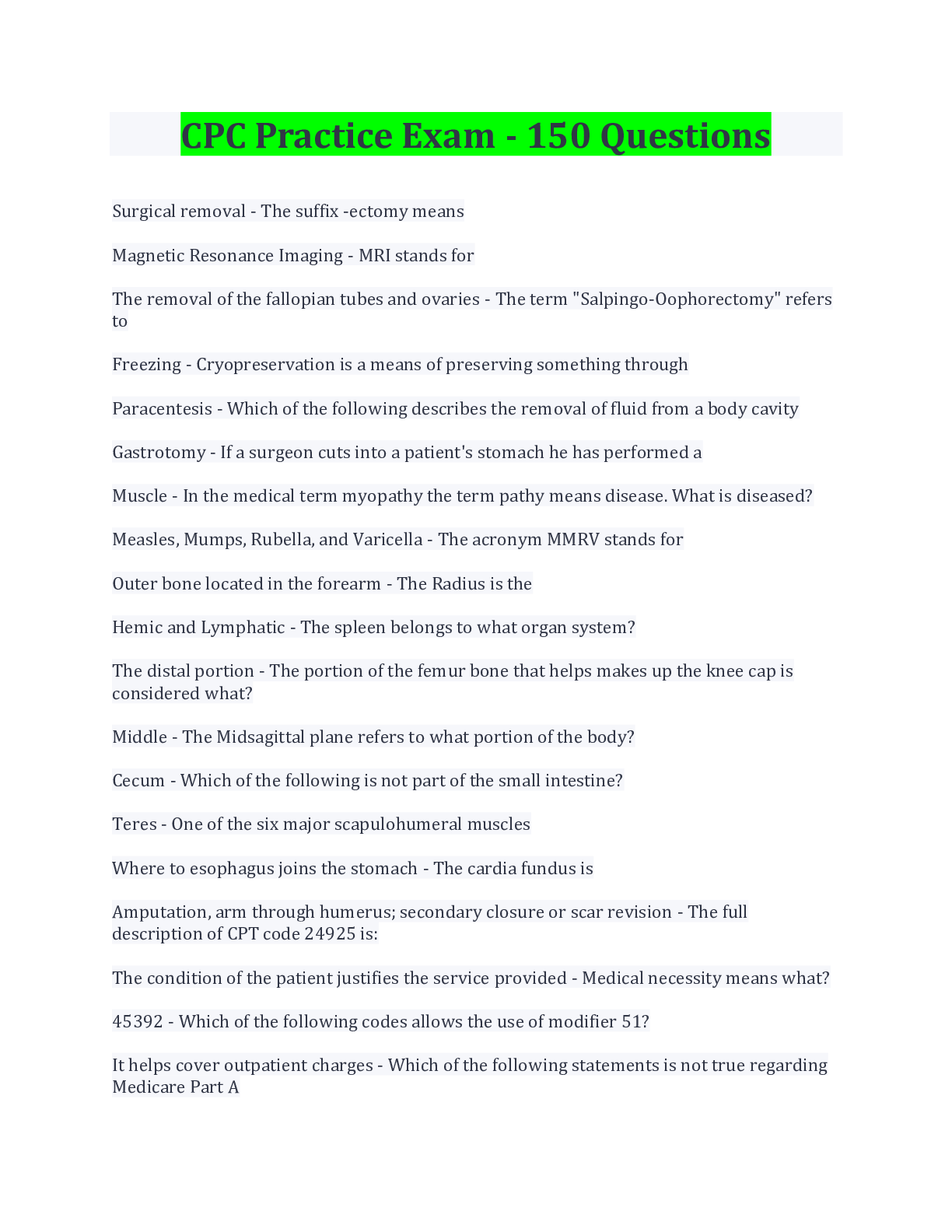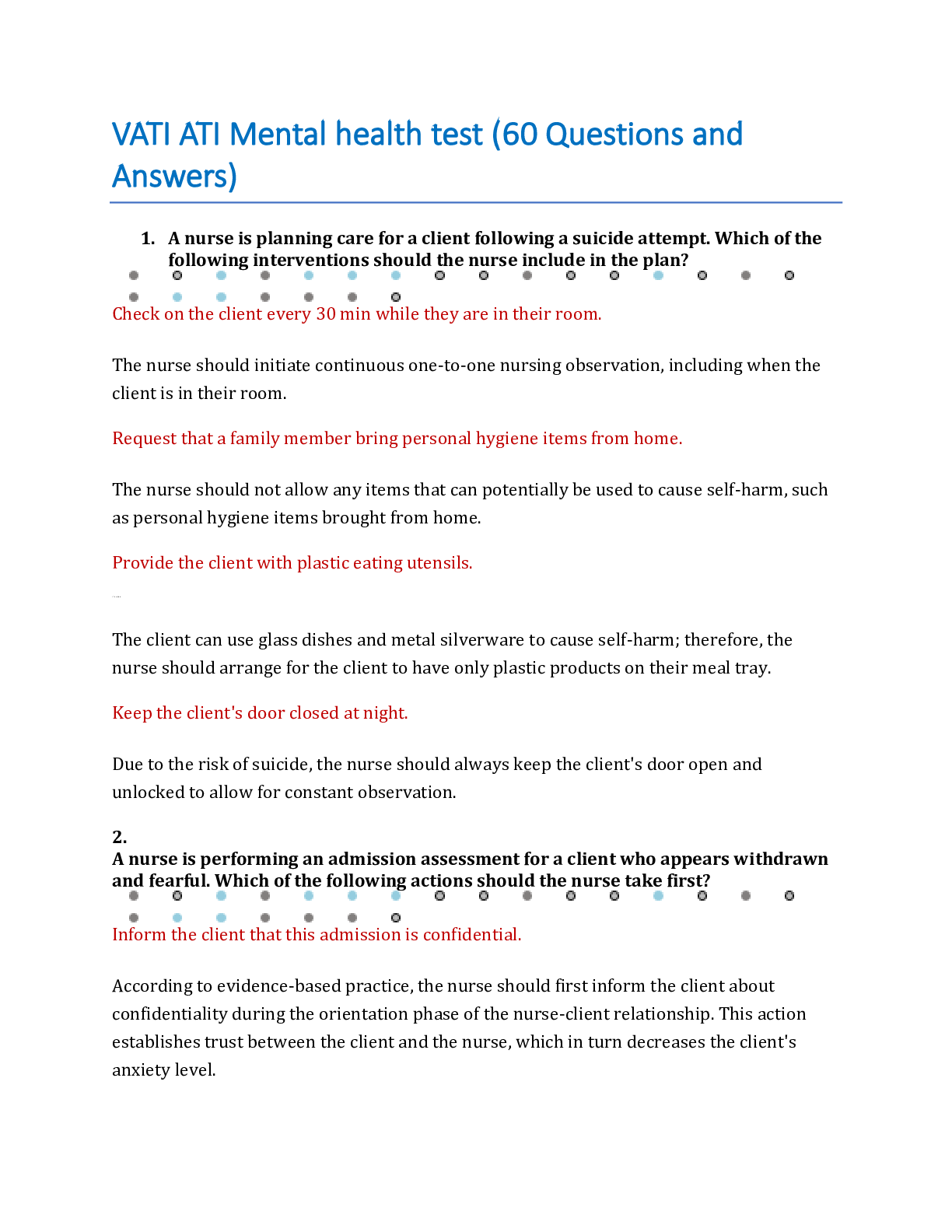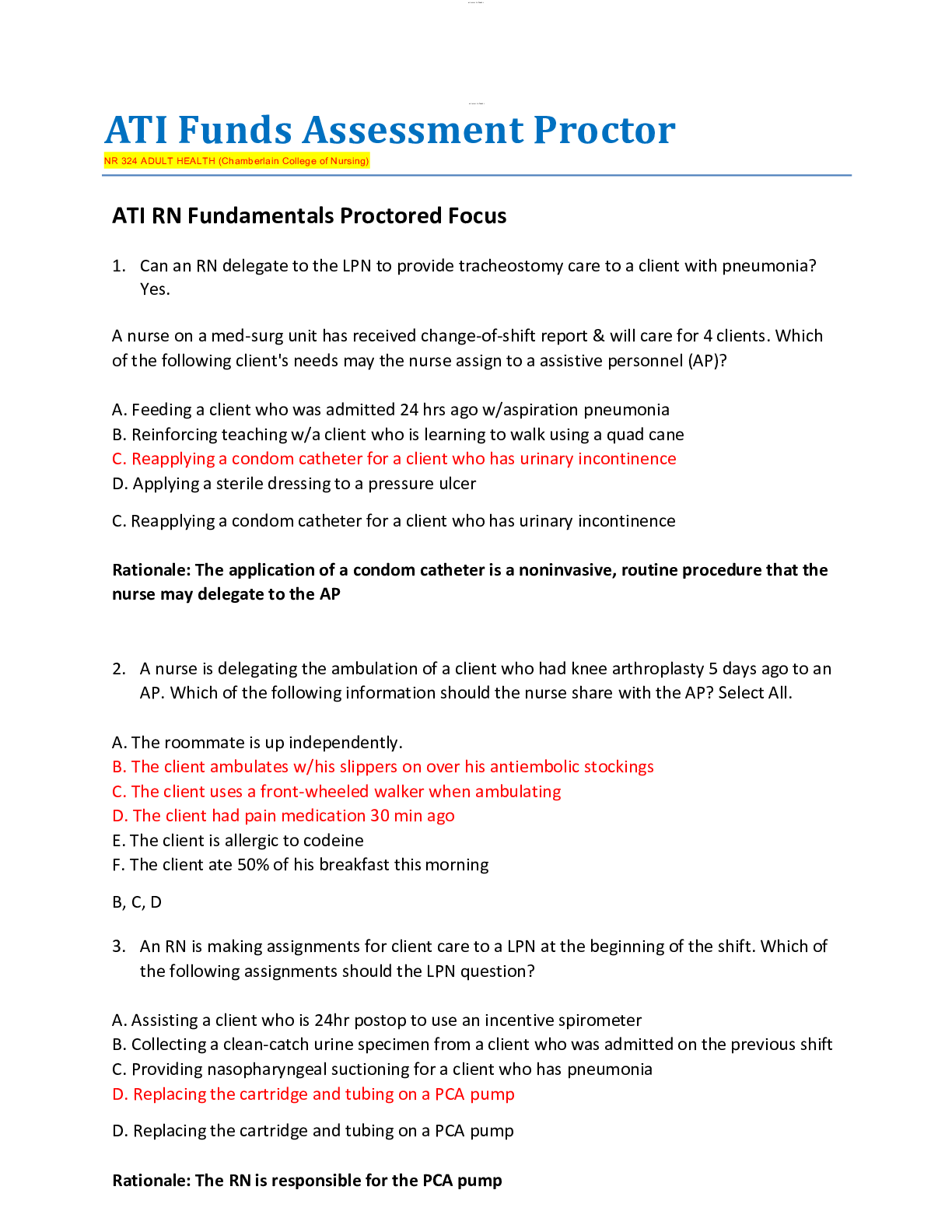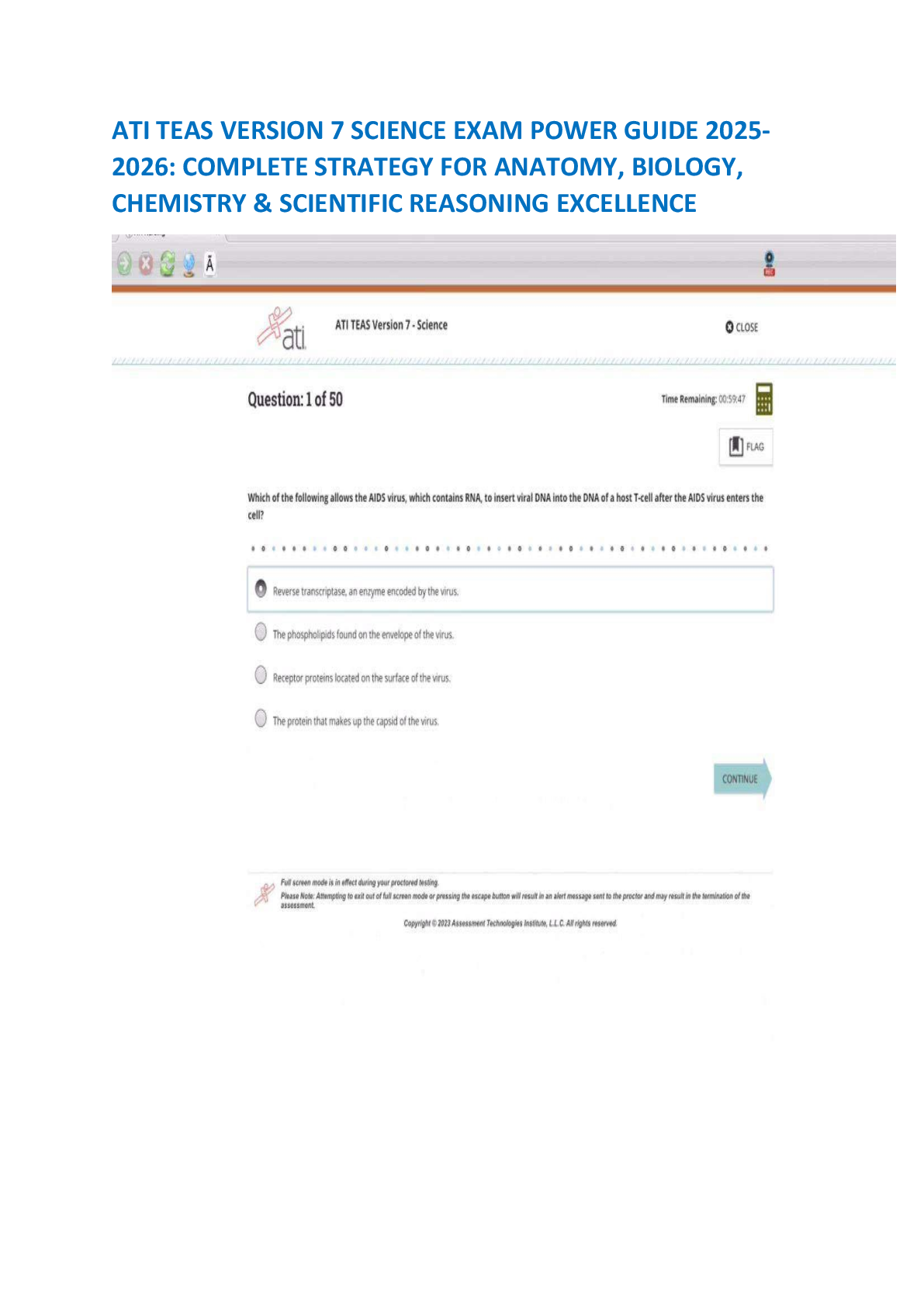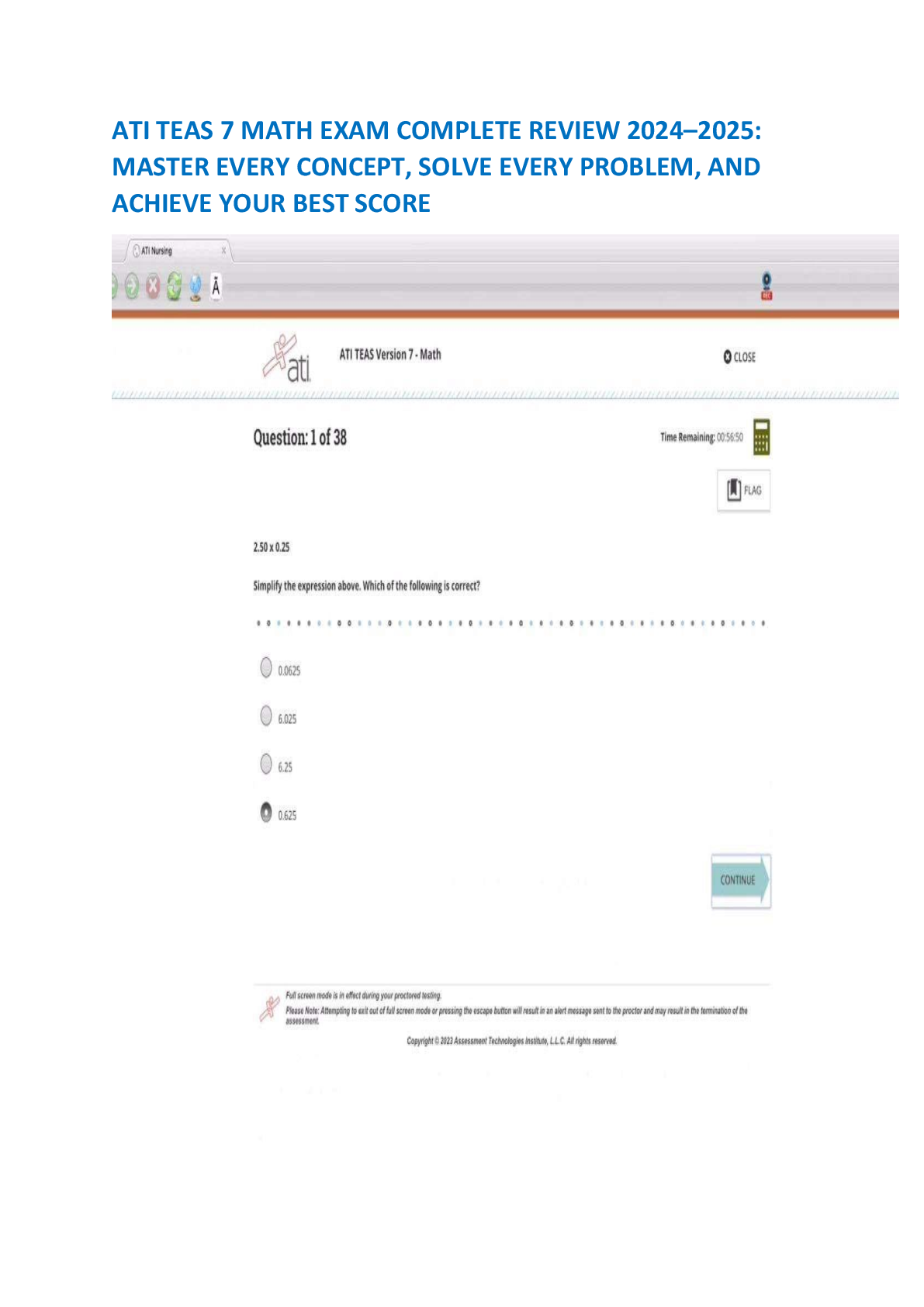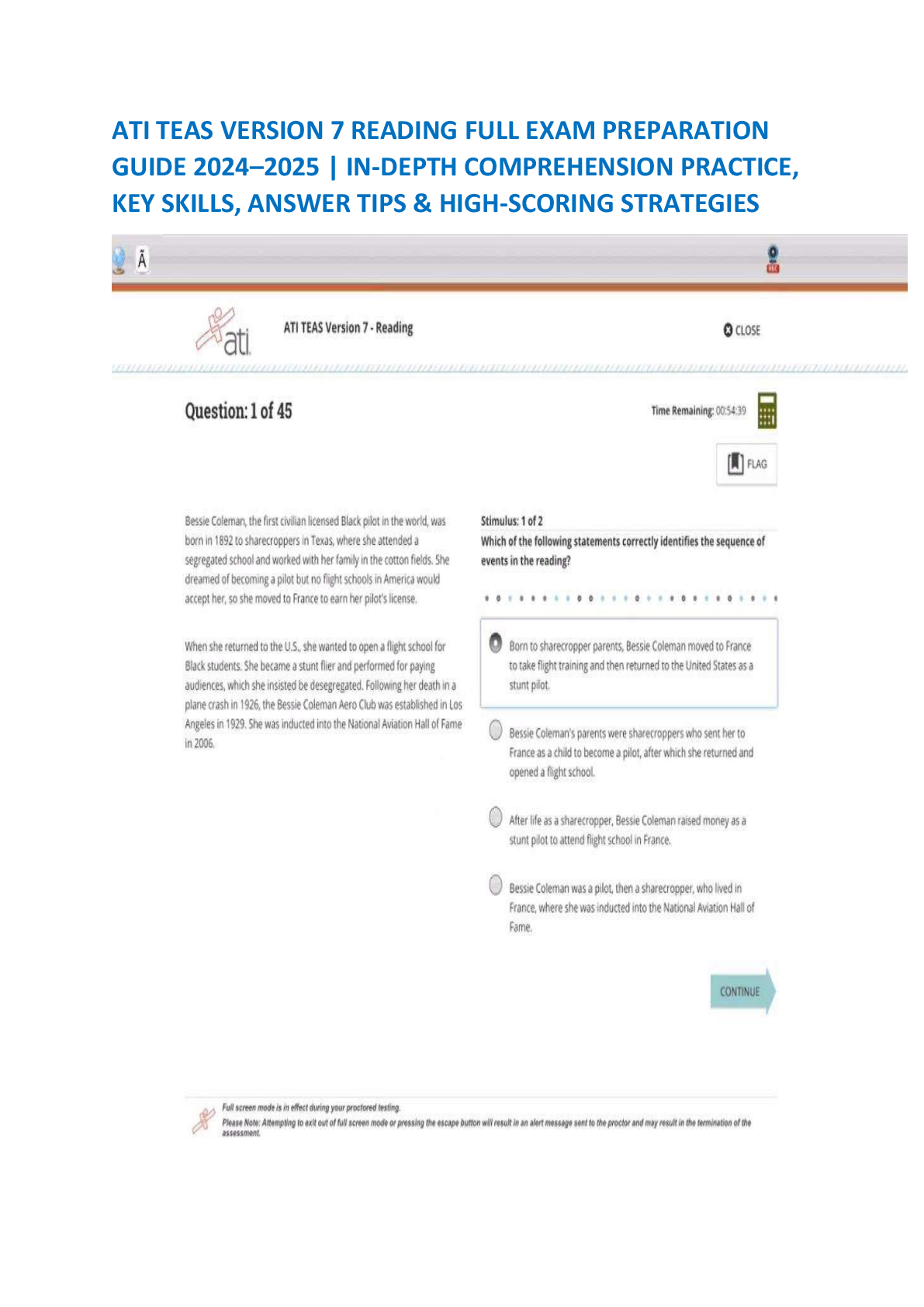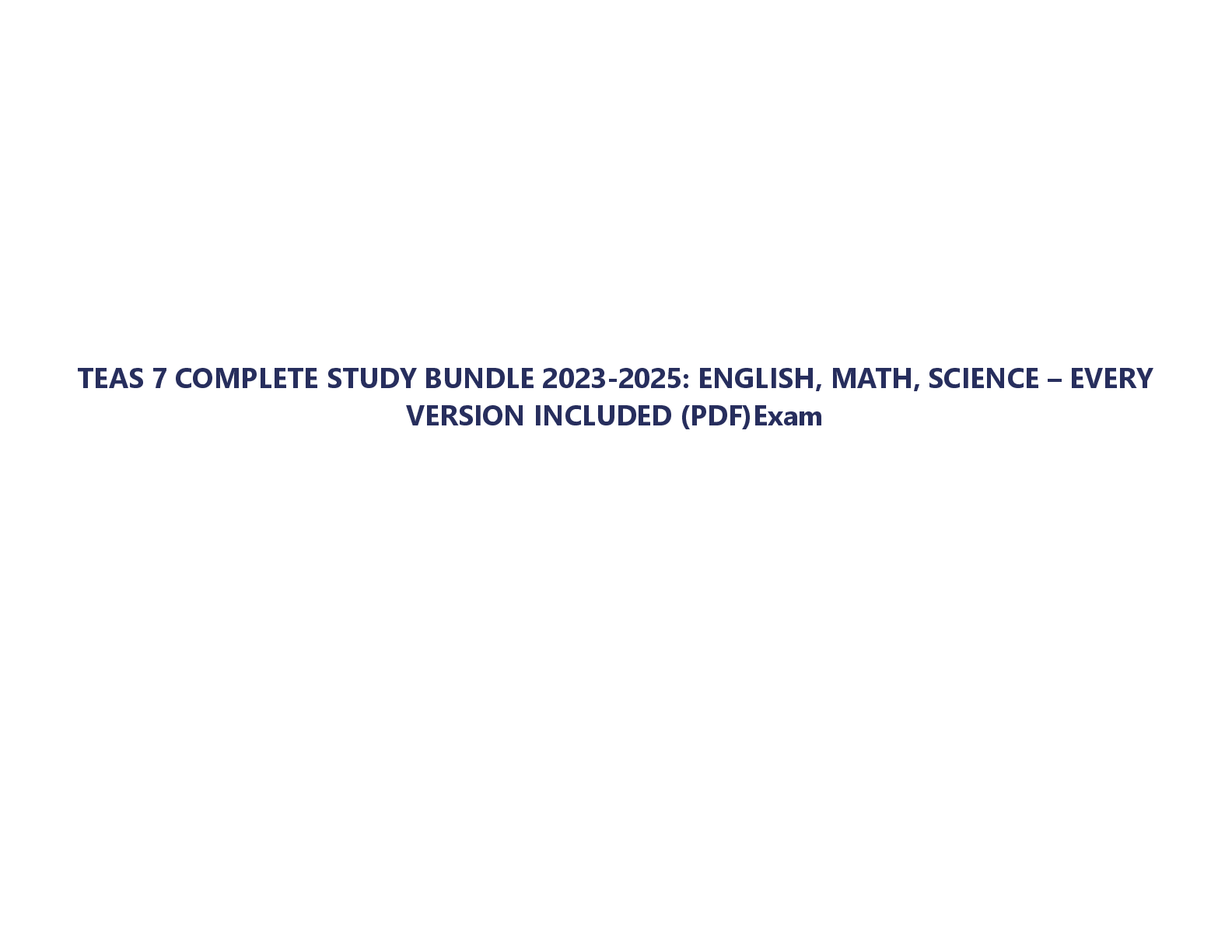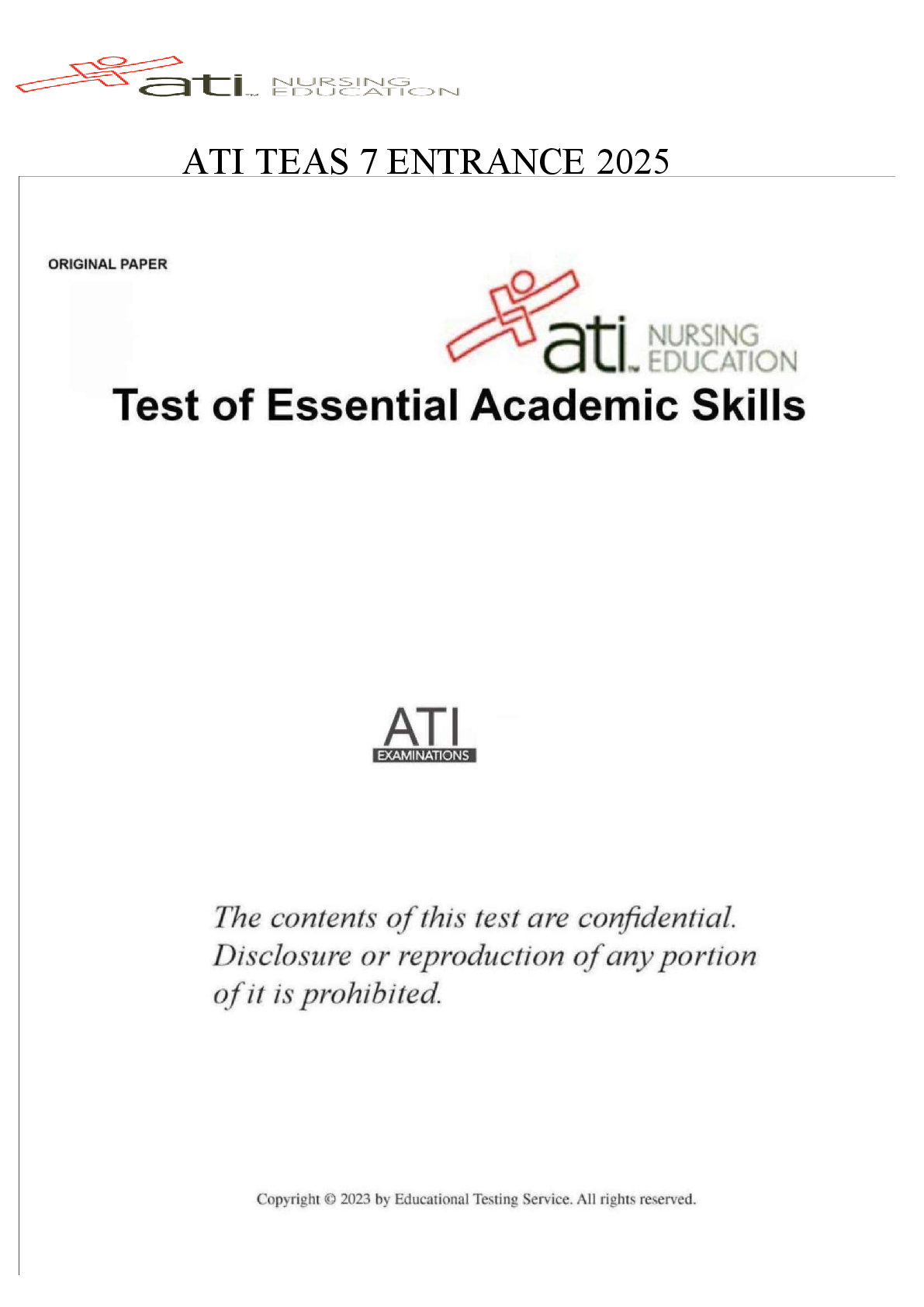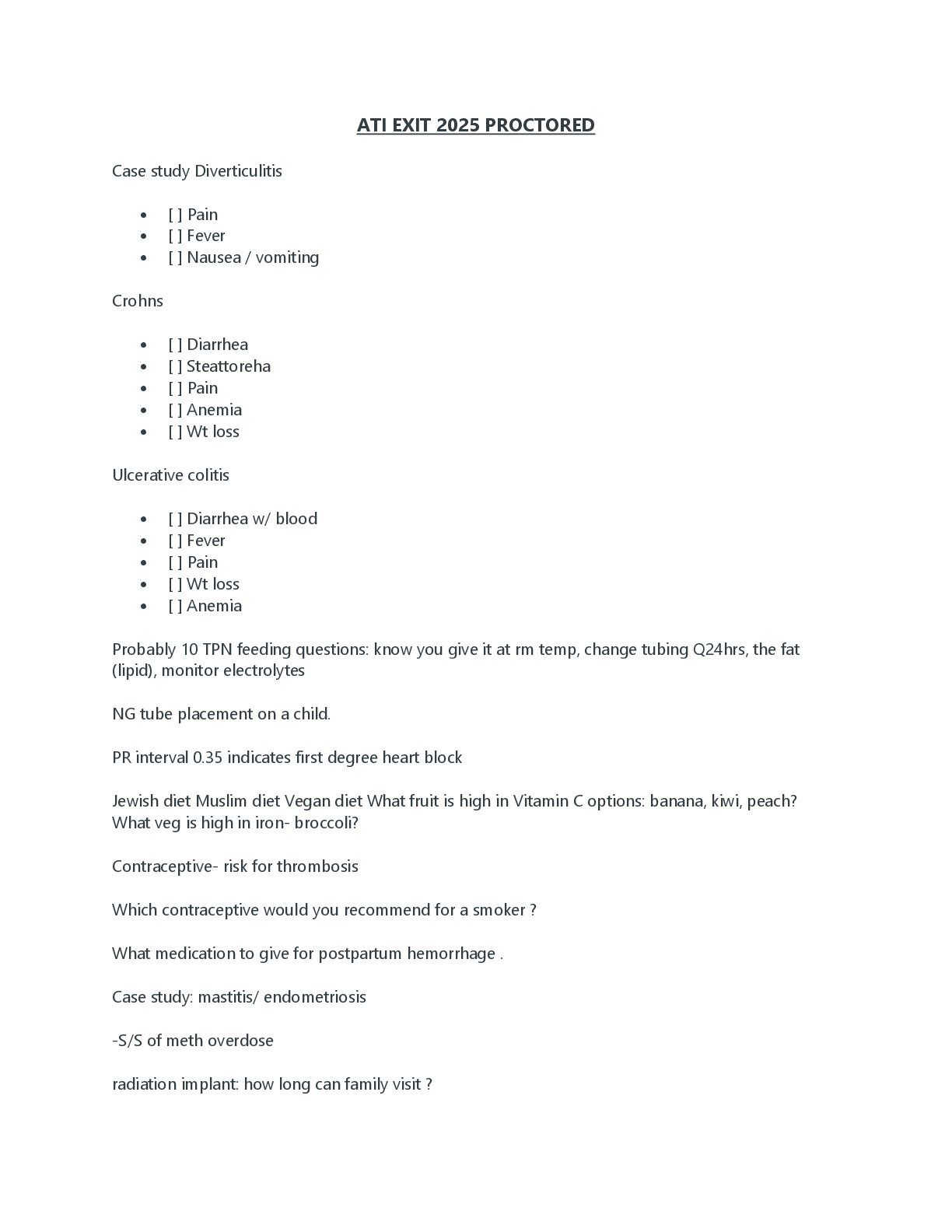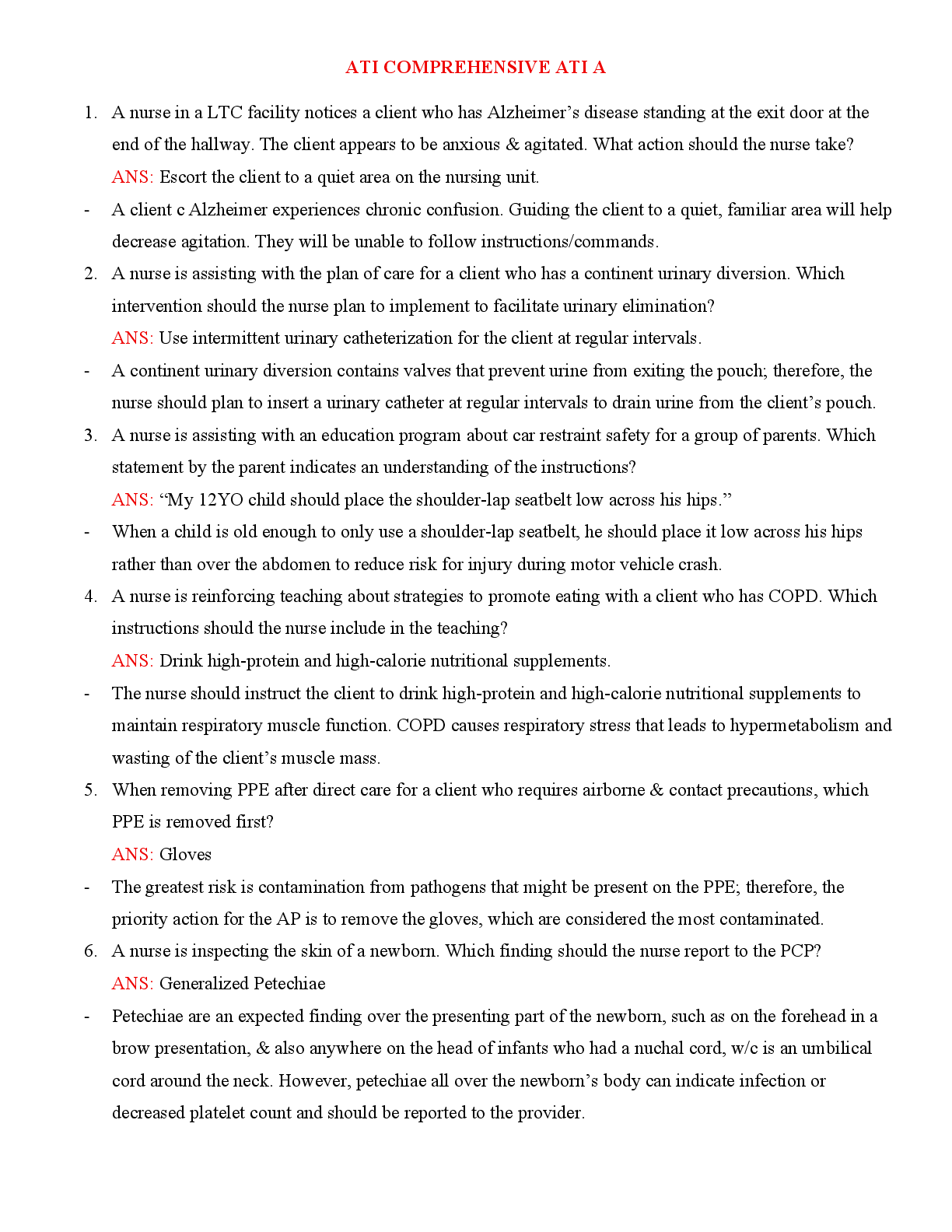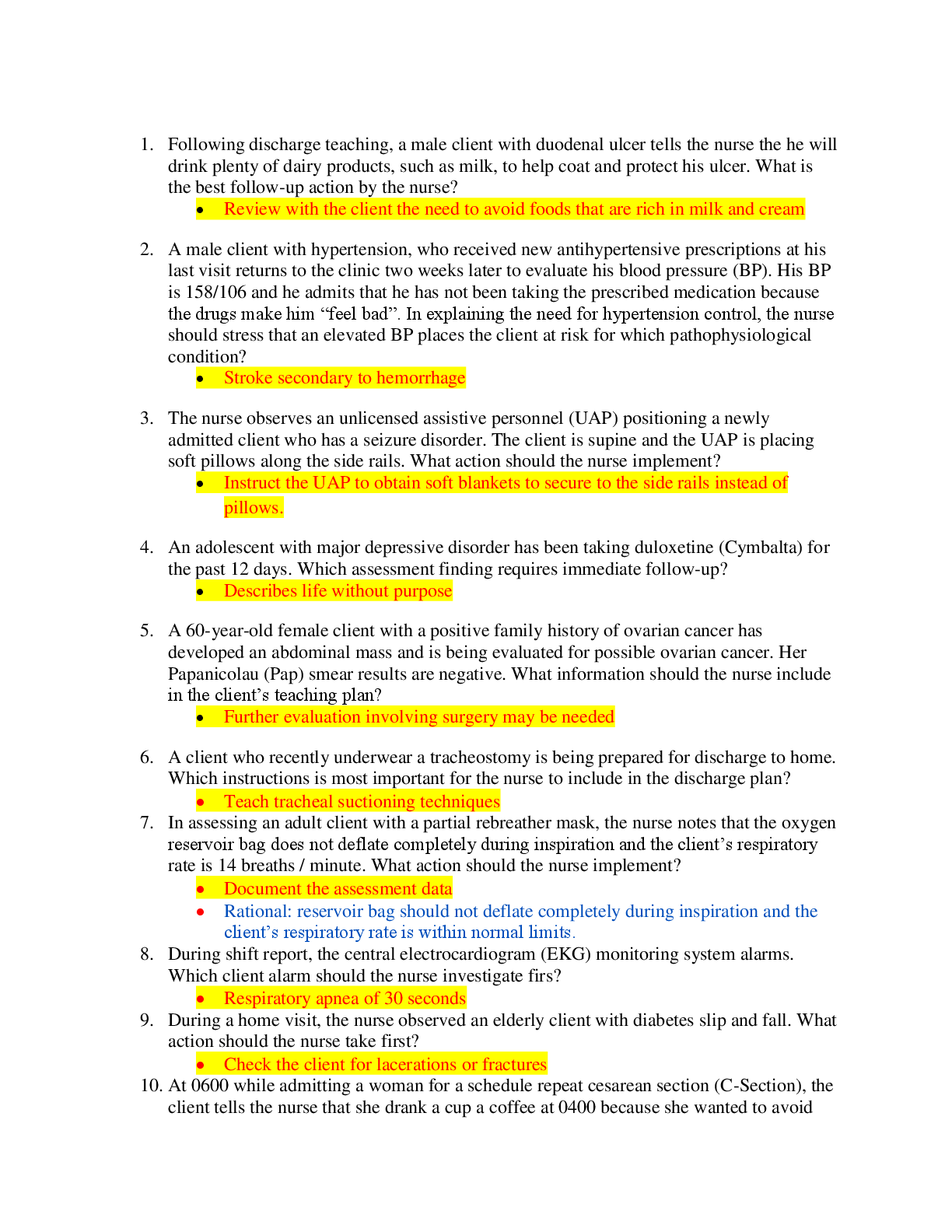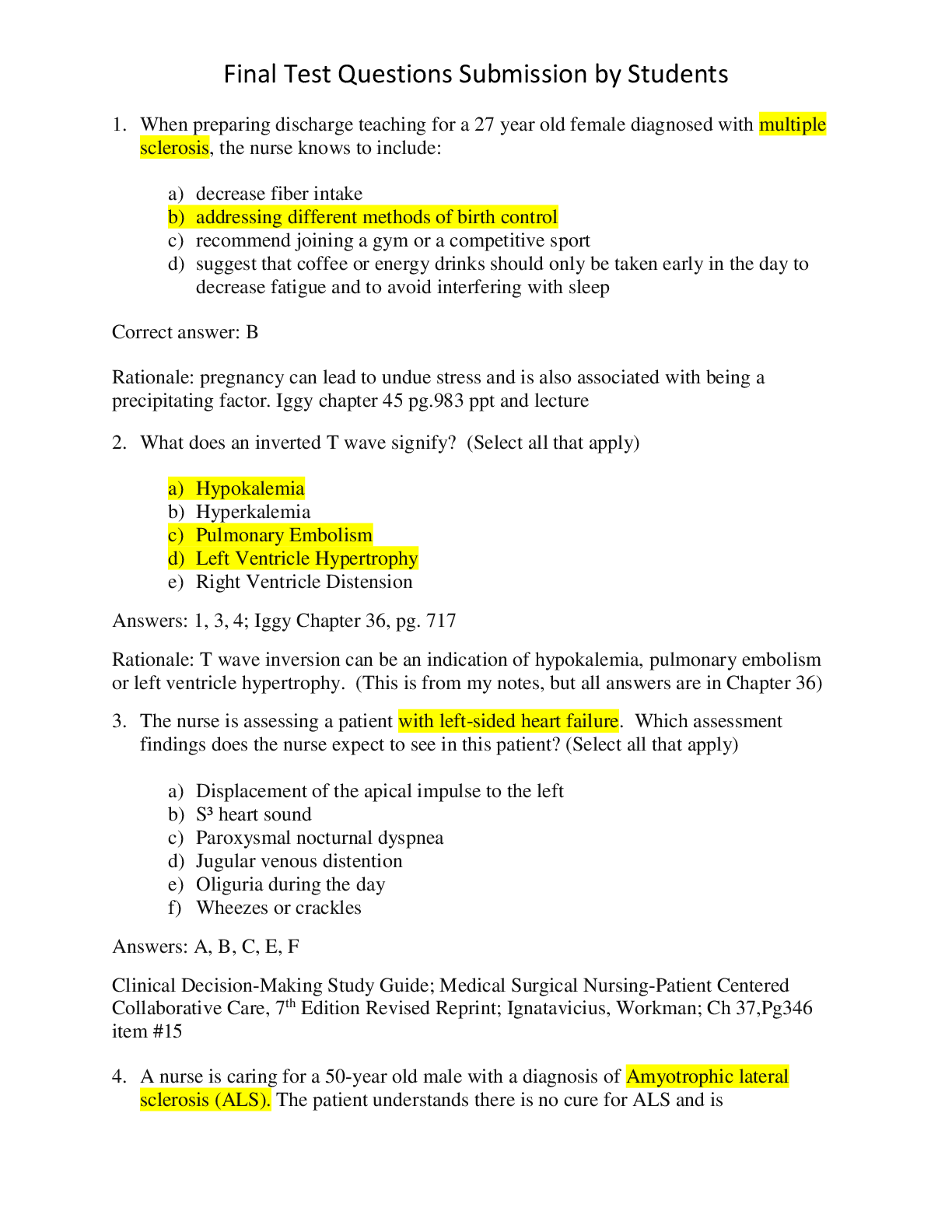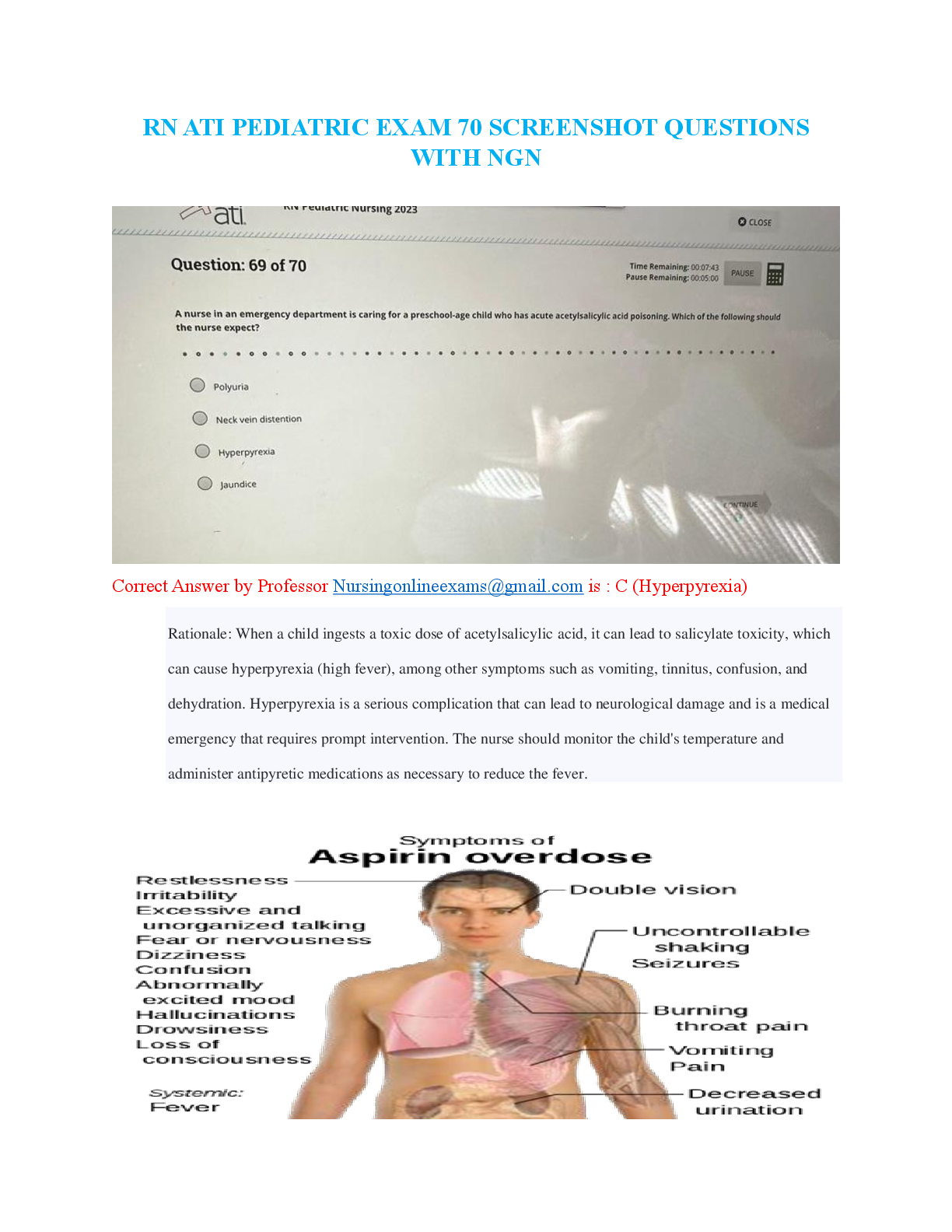ATI Exit Comprehensive Review B | The most commonly tested knowledge areas. 4 pages of Last minute reading.
Document Content and Description Below
1. • Delegating care to an AP
**Chronic Trach** is fair game for AP to suction; Can collect specimens
16. • Preventing contractures Trochanter rolls between the
legs
2. • Nurse
...
Manager's
and measure I&O's
Staffing
17. • Caring for a client in seclusion
Offer fluids every 2 hours
main concern
18. • Phenytoin (Dilantin) Causes Nausea
3. • Organizing workload and time management
Schedule priorities, Focused on organizing treatments and
scheduled meds by priority.
19. • Prenatal care findings to Facial, orbital edema (pre- report eclampsia)
4. • Provide cost effective care
◯ Using all levels of personnel to their fullest when making assignments.
◯ Providing necessary equipment and properly charging clients.
◯ Returning uncontaminated, unused
equipment to the appropriate
20. • Risk factor for DM HA1C- Average of glucose
for 3 months
21. • Mild Anxiety Heightened perceptual field
22. • Sibling binding Give the older sibling a gift when the infant receives a gift
department for credit.
◯ Using equipment properly to prevent wastage.
◯ Providing training to staff unfamiliar with equipment.
◯ Returning equipment (IV, kangaroo pumps) to the proper department (central service, central
distribution) as soon as it is no longer needed. This action will
23. • Teaching relaxation techniques
24. • Use of therapeutic communication with an adolescent
25. • Postpartum priority action for difficulty voiding
26. • Pressure ulcers and impaired skin integrity
Muscle relaxation techniques
involve the peers
Run warm water over
Apply lubricating lotion to the top of the feet
5. • Reporting client
prevent further cost to clients.
Report the abuse to the Charge
27. • Turning a client Chose the answer with the sheet
abuse
Nurse (chain of command)
28. • Parkinson's disease client
rinse mouth out
6. • Elder abuse The family is giving the elderly patient sedative medications
7. • Potential child abuse "the infant should be sleeping
throughout the night"
safety
29. • MRI Question Place the client's ring in the safe/vault
30. • Acarbose med Take medication AFTER the
8. • Prioritizing the needs of multiple clients
- First check for bleeding (impending shock)
- Second priority is potential cardiac
emergency
31. • Misoprostol (Cytotec) cervical ripening med
first bite of foot
Foley cath
32. • Methersol Osteoporosis
9. • Hyperthermia seizure precautions. (febrile seizures)
33. • Nephrotic diet Low protein, low sodium
10. • Parkinson Meds (Carbidopa/levodopa)
cause dizziness
34. • Prevent uric acid stones Add citrus to diet (orange)
35. • Simvastatin (Lipitor) AE Muscle weakness
11. • Kawasaki disease choose the heart option (can give
the child aspirin)
36. • Contraindications to Metformin for DM
Nephrotoxic, DO NOT GIVE
w/ dye
12. • In a chemical take the clothes off incoming
disaster
patients
37. • AE of ACE inhibitor Orthostatic hypotension
13. • Practice Resources Clinical Judgement/Clinical Practices 38. • Meds for bipolar disorder, Liver enzymes
labs to monitor
14. • Pressure Ulcers: refer the patient to the wound clinic
Referrals
15. • Protecting a client
cover tubing/equipment
39. • AE of Proton Pump inhibitors
osteoporosis
with latex allergy
40. • AE of Methotrexate Immunosuppression
41. • Zidovudine lab values CBC and Platelet count
42. • Teaching about Clopidogrel (Plavix)
Stop before surgery (5 days or more prior)
65. • ICP Body alignment keep the body positioned at the midline, (Elevate the bed 30 degrees
43. • Med Reconciliation Client returning from Surgery
REQUIRES med rec
66. • Sign of ICP
and no suction and quiet environment)
Unequal pupils
44. • Perforated appendicitis
45. • Intervention after
No pain; "release of pressure within effected area expresses decreased pain"
Increase fluids, monitor for
(eye diagram)
67. • Burns take the pts clothes off and fluids
68. • DVT take off once a day, DO NOT fold (could be
a not what to do ?)
epidural
46. • Pernicious Anemia DX test
47. • Collecting a specimen and urine culture
hypotension
Schilling test
Sterile gloves and change gloves
69. • Pt. wants to see their med record
70. • Non-stress test
71. •
Tell them you will start the process; there is protocol to initiate
Transducer, Toco Contraindication: History of DVT
48. • Urine culture take from the port Contraceptives
49. • Risk factor for newborn
Overdue child
72. • Celiac diet Potato pancakes (no gluten: wheat or
grains)
hypoglycemia
50. • Expected findings during cardiac cath
51. • Gastric Bipass
A warming feeling Puree for 6 months
73. • Infant cord care
74. • Frayed cord in client room
Keep it dry Remove it
surgery
52. • Evaluating antiretroviral TX
Increase CD4
75. • NG tube Sit patient up, High Fowlers
76. • NG tube, why To rest the bowels
53. • Dehydration in a 3 month old infant
lethargic; most accurate assessment
of neonate hydration is daily weights
77. • Thyroid
storm
Everything increases
54. • Feeding a client
Stay at eye level; lowered chin action
78. • Paracentesis Sit up right
with dysphagia
55. • Inserting peripheral IV
is desired
advance the cath after flash
79. • Weight loss, and overall nutritional status
check Albumin; low albumin or pre-albumin indicates malnutrition
56. • After mastectomy decompress the suction bulb
57. • COPD High carb diet
58. • Hyperthyroidism seizure precautions, decreases
potassium
80. • Lyme disease Reportable
81. • Chlamydia Reportable
82. • TB Put mask on pt when transferring pt
83. • Dehydration Causes oliguria
59. • Identifying the arrhythmia
60. • Purpose of telemetry
61. • Cancer disorder, client data to report
A FIB, no P wave; tachycardia
To identify dysrhythmias infection?
84. • Vaginal radiation implant
85. • DVT:
interventions
Interventions; insert urinary catheter
Measure leg circumference, NOT Homan's sign (only indicates/supports diagnosis)
62. • Assessing a client who has a fat
Petechiae at the trunk
86. • Interpreter Use hospital interpreter or interpreter line
EVERY TIME, ALL THE TIME
embolism
63. • Complications of A FIB
64. • Pulmonary Embolism
Clot formation Dyspnea
87. • Advance
directive; changes?
88. • Advance directive; pt charting
Can be changed by pt
Place a copy in the chart
::::::::::::::::::::::::::::::::::::::::CONTENT CONTINUED IN THE ATTACHMENT:::::::::::::::::::::::::::::::::::::::::::::::::::
[Show More]
Last updated: 8 months ago
Preview 2 out of 4 pages

